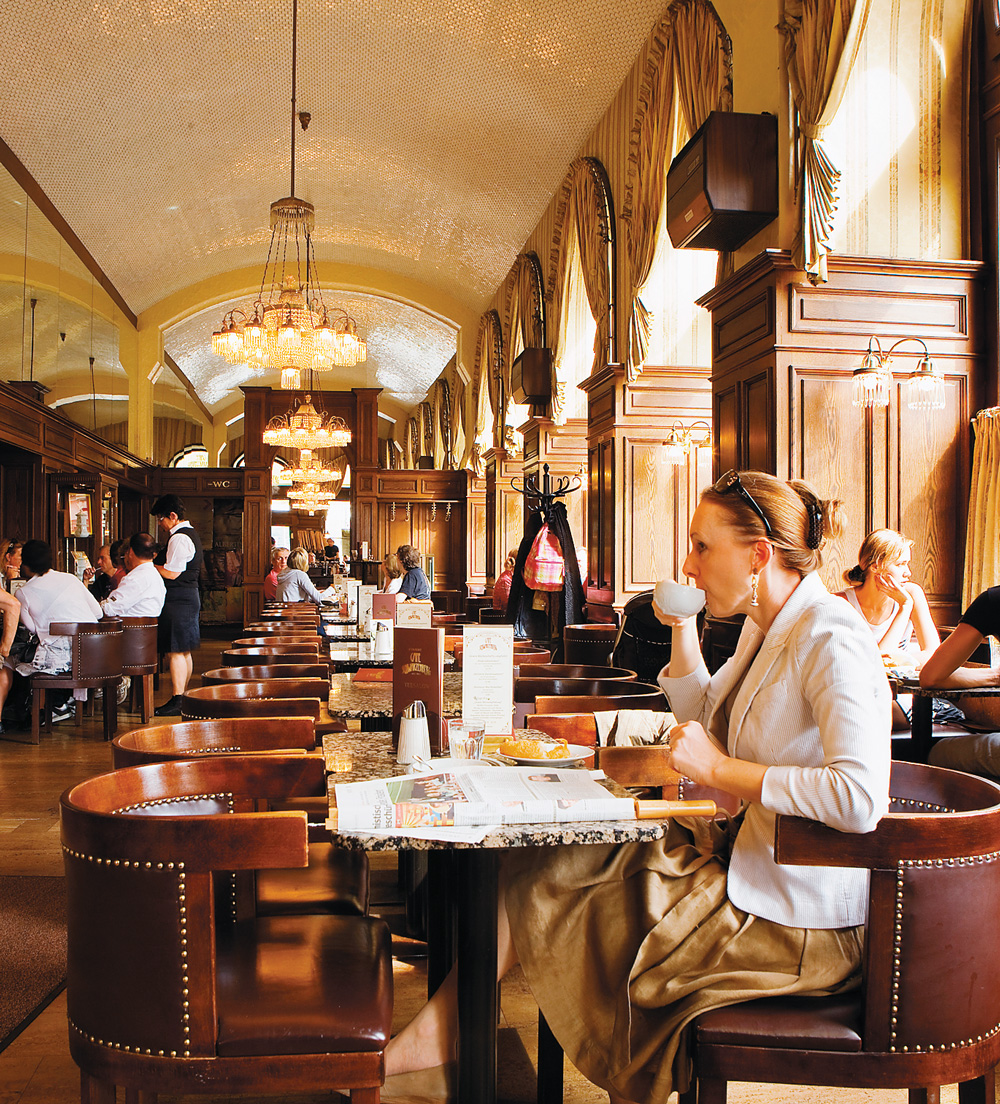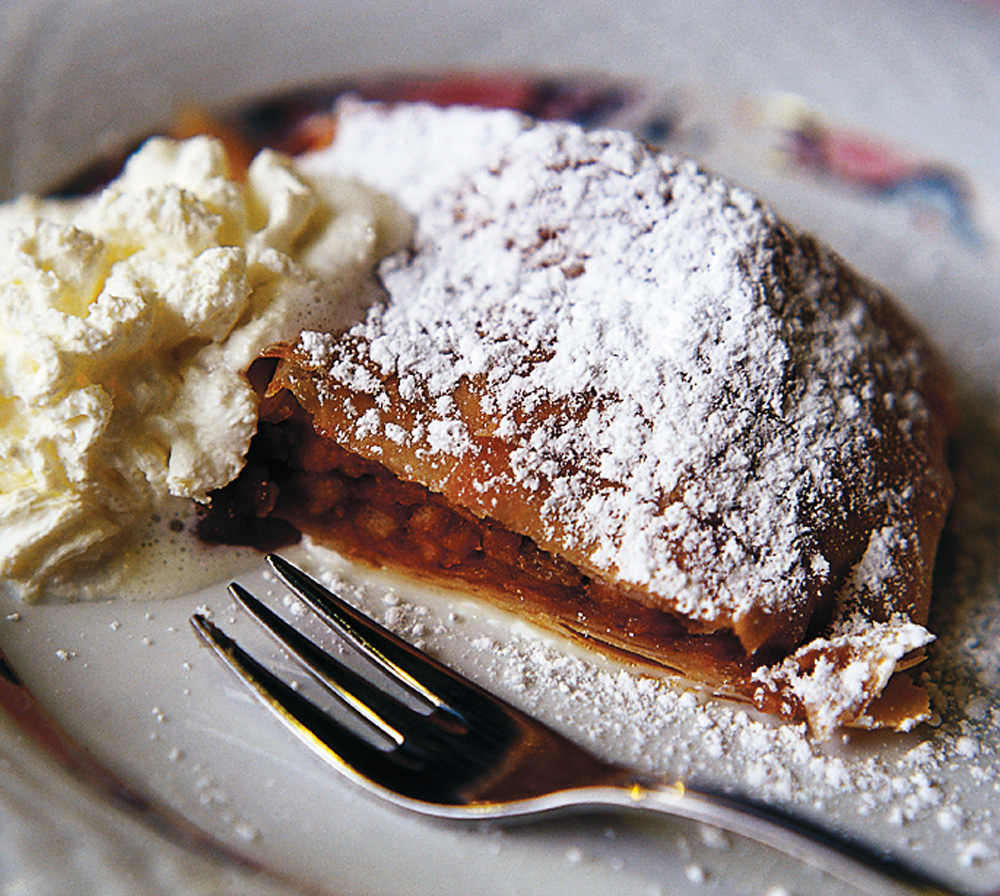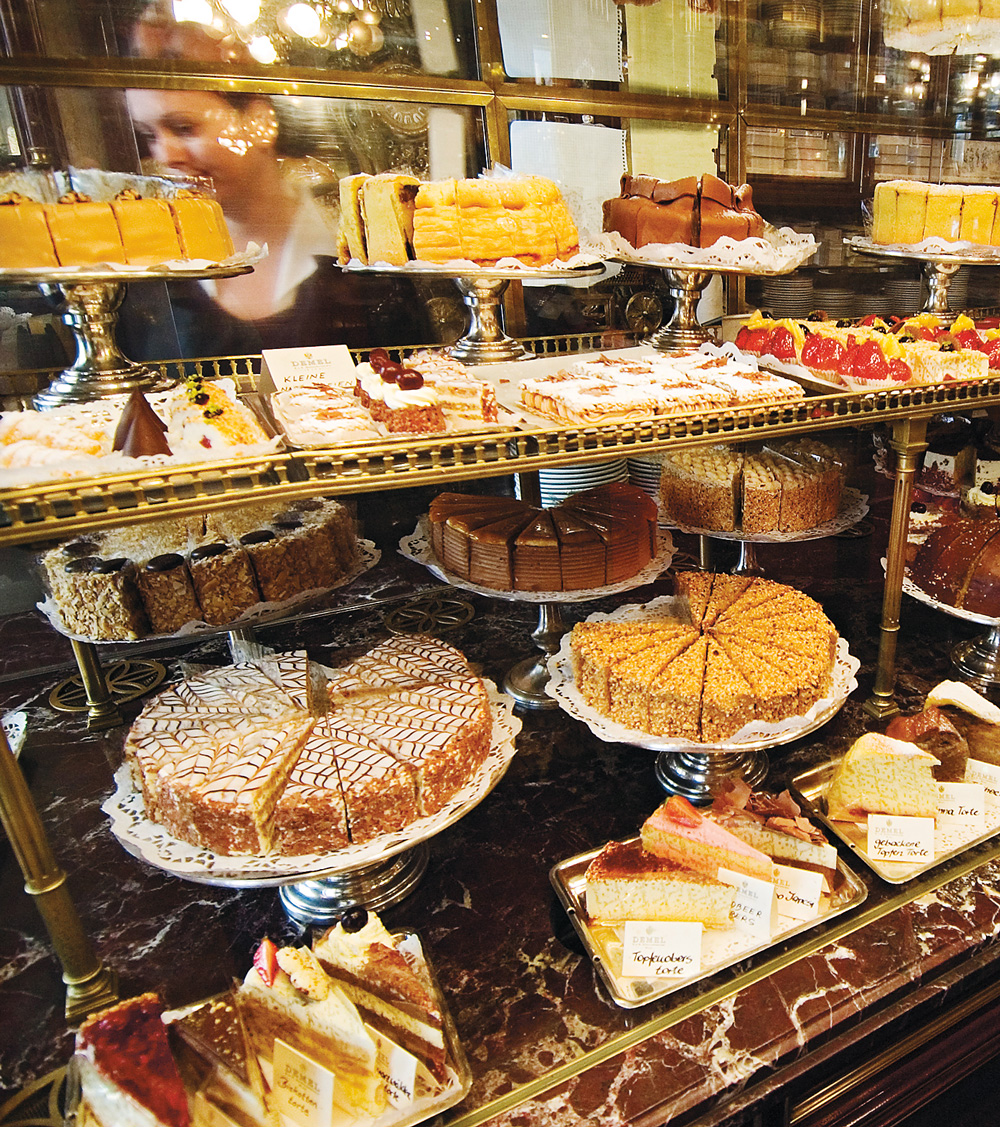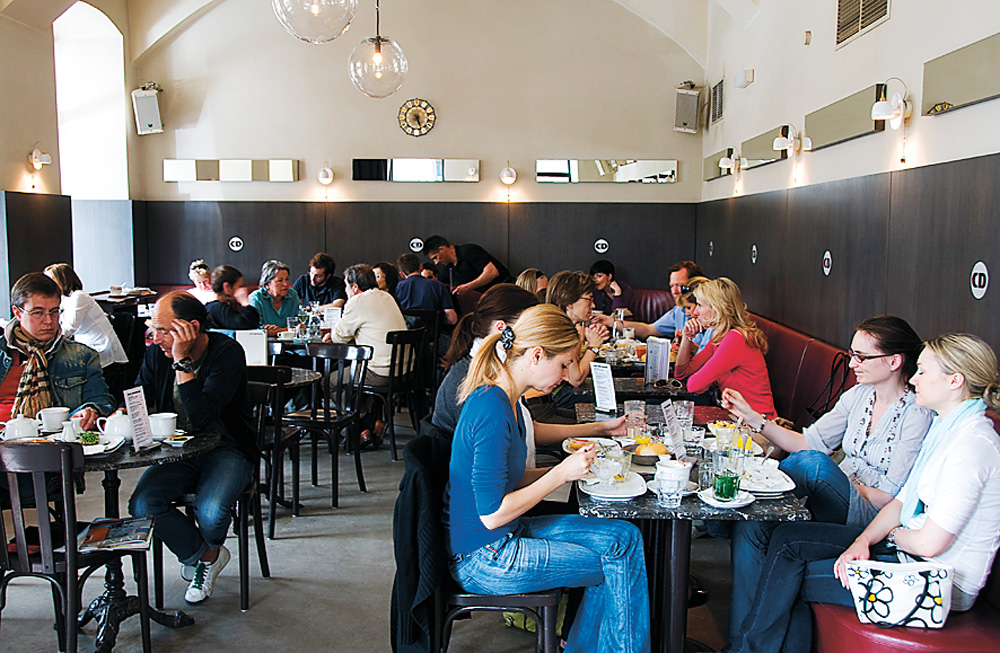 Coffee Houses & Cake Shops
Coffee Houses & Cake Shops
Vienna’s long-standing tradition of coffee houses and cake shops captures the spirit of Gemütlichkeit – that quintessential Austrian quality of cosiness and languid indulgence. Grand or humble, poster-plastered or chandelier-lit, this is where you can join the locals for whipped cream, gossip and a slice of living history.

JEAN-PIERRE LESCOURRET / GETTY IMAGES ©
Coffee Houses
Poet and playwright Bertolt Brecht once described Vienna as ‘a small city built around a few coffee houses’ where the locals ‘sit together and read papers.’ It’s a simple observation but a perceptive one, for despite the overwhelming variety of coffee on offer, caffeine is secondary to the Kaffeehaus experience. In many ways coffee is but an entrance ticket to a world where you can meet friends, browse newspapers, play games, put the world to rights, reflect and linger undisturbed for hours. Affectionately dubbed Vienna’s ‘living rooms,’ many Wiener go misty eyed when you ask them about their favourite Kaffeehaus .
COFFEE HOUSE HISTORY
It all started with some mystery beans. Back at the Battle of Vienna in 1683, when Polish-Habsburg allies sent the Ottoman invaders packing, the Turks, so the story goes, left sacks of precious coffee beans at the city gates as they beat a hasty retreat. There was much speculation as to what these beans were, with most surmising camel feed or dung. King Jan III Sobieski handed over the beans to his military officer, Jerzy Franciszek Kulczycki, who recognised their value, having encountered coffee during time spent in captivity in Turkey. Adding a dash of milk and sweetening the aromatic blend to Viennese tastes, he soon opened Vienna’s first coffee house: the Hof zur Blauen Flasche. In coffee house circles to this day, Kulczycki is considered something of a patron saint.
The Viennese were hooked and soon coffee houses began to pop up all over the city. By the late 18th century, Kaffeehäuser were in vogue in high society, with composers like Mozart and Beethoven giving public performances. They became places to meet, socialise and, on a practical level, warm up.
This boom continued in the 19th century thanks to the Habsburg’s insatiable appetite for coffee, cake and palatial surrounds. Sacher Torte was created for Prince Klemens Wenzel von Metternich in 1832 and swiftly became an imperial favourite. In the latter half of the century, grand coffee houses such as Landtmann, Central and Sperl opened their doors, setting a precedent with grand interiors adorned with chandeliers, Thonet chairs and marble-topped tables.
At the turn of the century, coffee houses attracted the greatest artists, musicians, writers and radical thinkers of the age – Mahler, Klimt, Freud, Trotsky and Otto Wagner. The 1950s signalled the end of an era for many Kaffeehäuser – a period the Viennese call the Kaffeehaussterben (coffee house death). Postwar, a new generation of Viennese had grown tired of the coffee house, which they saw as being antiquated and/or elitist. TVs and espresso bars also played a part in their closure, as did the scattering of Jews, many of whom were pivotal to making the coffee house a cultural institution. Luckily many of the best survived and the tradition later revived.
COFFEE HOUSE CULTURE
In 2011 Vienna’s coffee houses were added to the Unesco list of Intangible Cultural Heritage, which defines them as ‘places where time and space are consumed, but only the coffee is found on the bill’. Indeed, life may rush ahead outside, but the clocks are stuck in 1910 in the Kaffeehaus , where the spirit of unhurried gentility remains sacrosanct. Neither time nor trend obsessed, coffee houses are like a nostalgic balm for the stresses of modern life; they are places where life dissolves into the warm simplicity of a good cup of coffee, impromptu conversation and nostalgic daydreaming.
While the echoes of the past can still be felt keenly in the marble splendour of stalwarts like Central and Sperl, a growing number of coffee houses are ushering in a new age of creativity, from pretty cupcake shops to feline-focused cat cafes imported from Japan.
Another nod to the social importance of Kaffeehäuser is the Kaffeesiederball, staged by the coffee houses owners at the Hofburg in February, one of the most glittering events on the ball calendar.
For more on coffee house culture, see the boxed text on Click here.
COFFEE DECODER
Ask for ‘a coffee, please’ and you may get a puzzled look. The following are fixtures on most menus:
Brauner Black but served with a tiny splash of cream; comes in gross (large) or klein (small).
Einspänner Strong coffee with whipped cream, served in a glass.
Verlängerter Brauner lengthened with hot water.
Mocca Sometimes spelled Mokka or Schwarzer – black coffee.
Melange The Viennese classic, served with milk and topped with milk froth or whipped cream, similar to a cappuccino.
Kapuziner With a little milk and perhaps a sprinkling of grated chocolate.
Eiskaffee Cold coffee with vanilla ice cream and whipped cream.
Maria Theresia With orange liqueur and whipped cream.
Türkische Comes in a copper pot with coffee grounds and sugar.
Cake Shops
Forget the schnitzel clichés, if the sweet-toothed Viennese could choose one last meal on earth, most would go straight for dessert. The city brims with Konditoreien (cake shops), where buttery aromas lure passers-by to counters brimming with fresh batches of cream-filled, chocolate-glazed, fruit-topped treats. In these mini temples of three o’clock indulgence, pastries, cakes and tortes are elevated to an art form.
Many cake shops also do a fine line in Confiserie (confectionery), producing their own sweets and chocolate. Sumptuous examples include Demel, one-time purveyor to the imperial and royal court, famous for its chocolate-nougat Annatorte and fragrant candied violets. The Viennese swear by the feather-light macaroons, chocolates and tortes at Oberlaa, while retro Aida time warps you back to the 1950s with its delectable cakes and pink-kissed interior.
Top of the charts in Viennese cakes is
Sacher Torte.
Emperor Franz Josef was partial to this rich iced chocolate cake – its sweetness offset by a tangy layer of apricot jam – and it’s still a favourite at
Café Sacher
(01, Philharmonikerstrasse 4;
![]() 8am-midnight)
today.
Esterházytorte,
a marbled butter-cream and meringue torte, and flaky, quark-filled
Topfenstrudel
would also make the top 10.
Gugelhupf,
a ring-shaped marble cake,
Linzertorte,
a spiced tart filled with redcurrant jam, and good old apple strudel are as popular as ever, too.
8am-midnight)
today.
Esterházytorte,
a marbled butter-cream and meringue torte, and flaky, quark-filled
Topfenstrudel
would also make the top 10.
Gugelhupf,
a ring-shaped marble cake,
Linzertorte,
a spiced tart filled with redcurrant jam, and good old apple strudel are as popular as ever, too.



